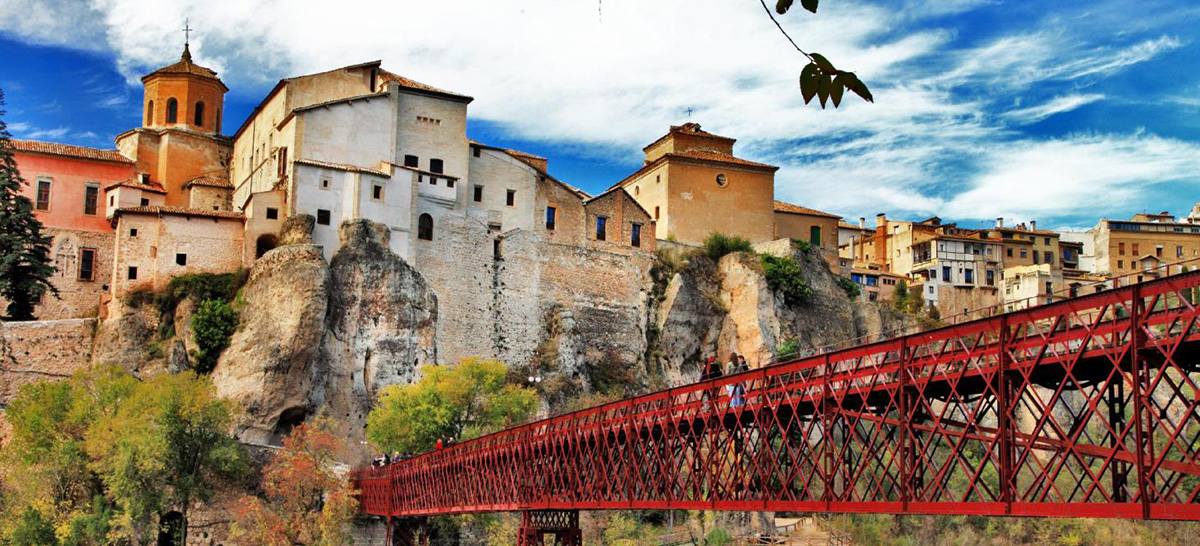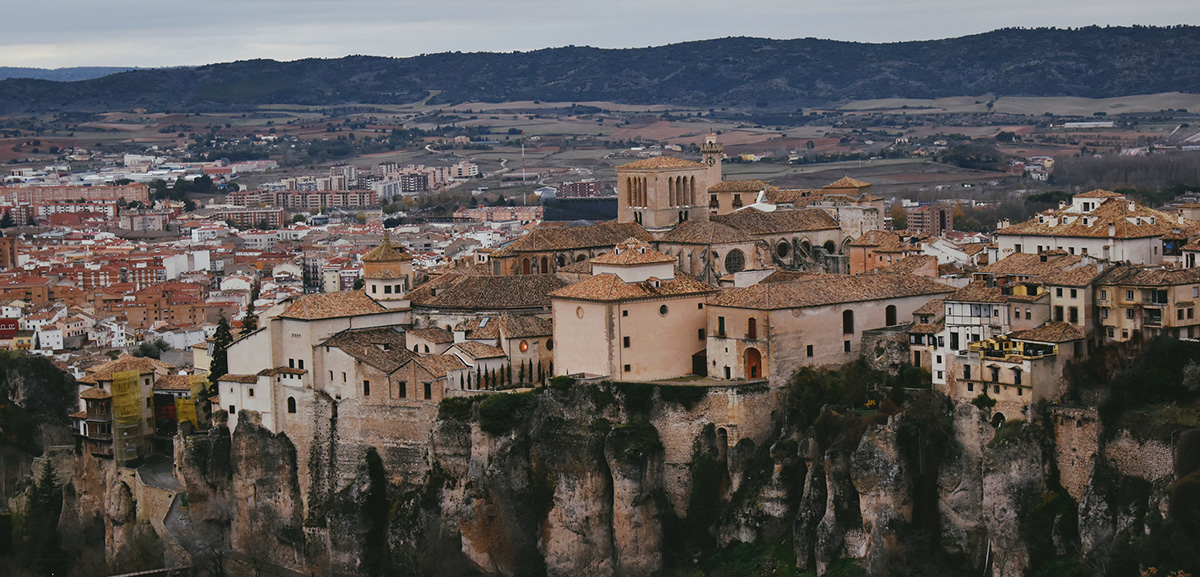
Cuenca It is a beautiful Spanish city, with a millenary history, although its tourist and historical attractions begin with the Muslim occupation. The many treasures that the centuries have left make it a great tourist destination in the country.
Especially since in the mid-90s UNESCO declared its beautiful historic center a World Heritage Site.
Cuenca
Spanish city and municipality, in the community of Castilla la Mancha, is the capital of the province. Its name derives from Latin conca, deep valley between mountains, although they have added titles and honors over the years: Very Noble and Very Loyal, Loyal and Heroic, for example.
The city is divided into two well marked parts, the old and the new city. The first was built on a hill surrounded by the river Júcar on one side and on the other by its tributary, the Huécar, which flows into the lower part of this first and old sector. To the west and south is the new city whose heart is Carretería Street.
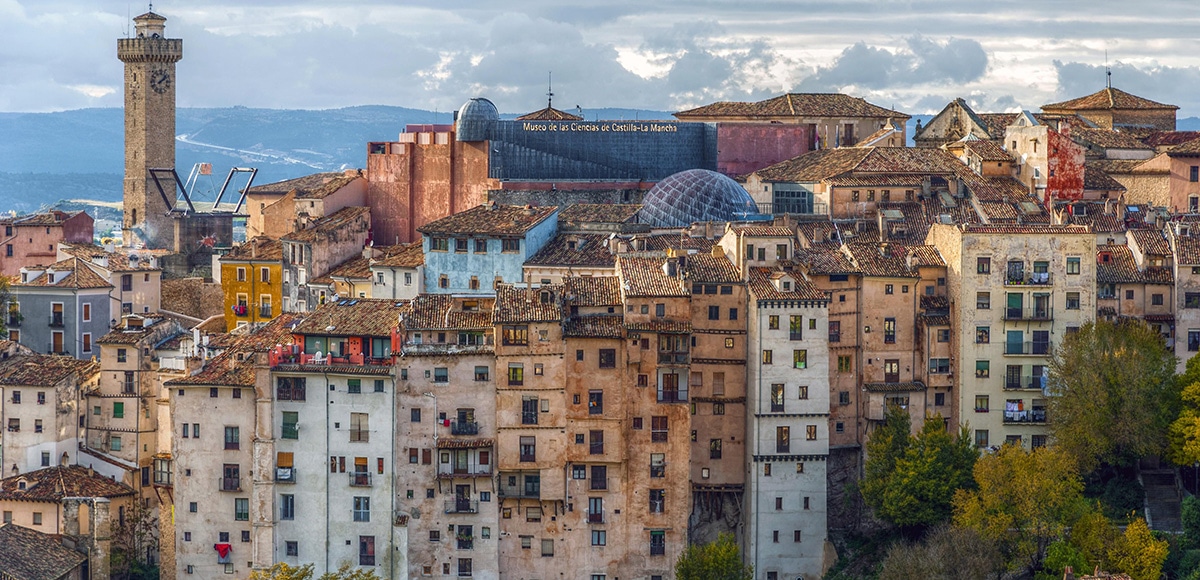
Cuenca enjoys a Mediterranean climate, with more thermal amplitude than the coastal zone, with cold and rainy winters and mild summers and with less rainfall. Of course, there are times when the temperatures in summer can be very high.
History tells us that the area of Cuenca has been inhabited since the Upper Paleolithic, about 90 thousand years BC, then came the Romans, later the barbarians and in the end the Muslims and population development. It passed from the Caliphate of Córdoba to the Taifa of Toledo and to the control of the Almoravids in 1180. It was Alfonso VIII who recovered the city in 1177.
What to see in the old town of Cuenca
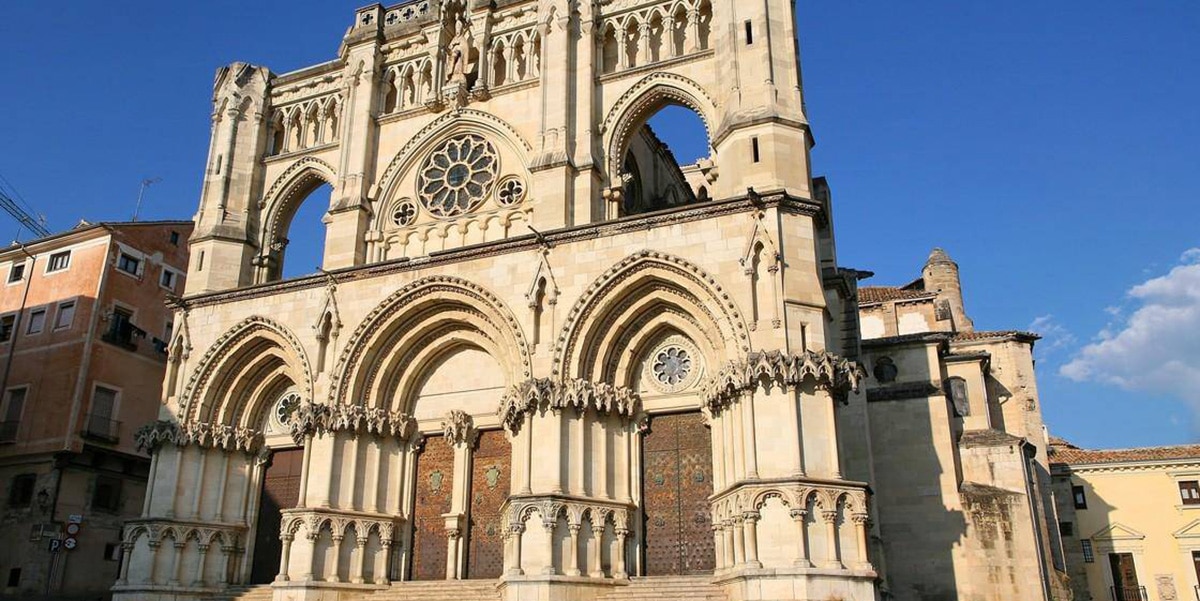
In 1996, UNESCO declared the Historic Walled City of Cuenca World Heritage City. The list includes the Barrio del Castillo, the Barrio de San Antón, the Barrio Tiradores and the Intramuros Enclosure.
To get a good overview of the city, it is advisable to stop at a distance. You can see the Convent of San Pablo, turned into a hotel, the Bridge of San Pablo, the Hanging Houses that are an emblem of the city ... Then one enters and can wander through its streets and squares, appreciate its buildings, its palaces, the churches and convents of different styles. This is where the Plaza Mayor, the Cathedral of Cuenca, the Town Hall, the Mangana Tower, the Church of San Miguel, the Sanctuary of Our Lady of Sorrows ...
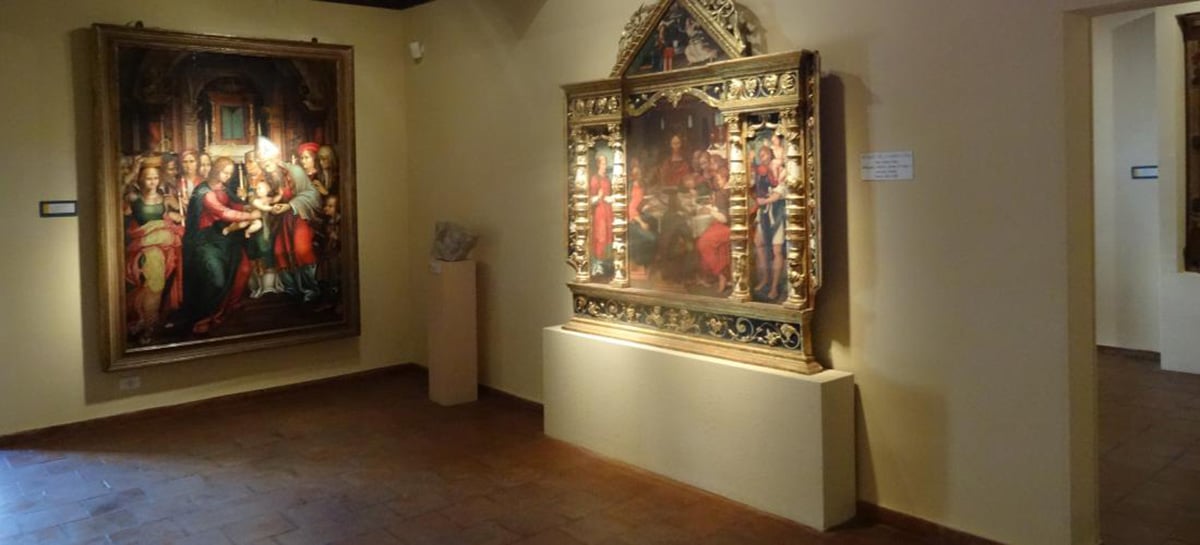
La Cathedral of Our Lady of Grace It is in the Gothic style although it has a certain French influence. It has a Latin cross design and the triforium it still survives from the original Norman structure and is unique in Spain. The main facade has three access doors, the main altar is by Ventura Rodríguez and there is blacksmith work from the XNUMXth century.
The cathedral opens from Monday to Sunday from 10 am to 7:30 pm and does not close at noon. General admission costs 5 euros. Next to it is the Episcopal palace and on the lower floor is the Diocesan Museum with the great art collection of the cathedral, with the work Christ on the Cross and Prayer in the Garden of Olives, by The Greek.
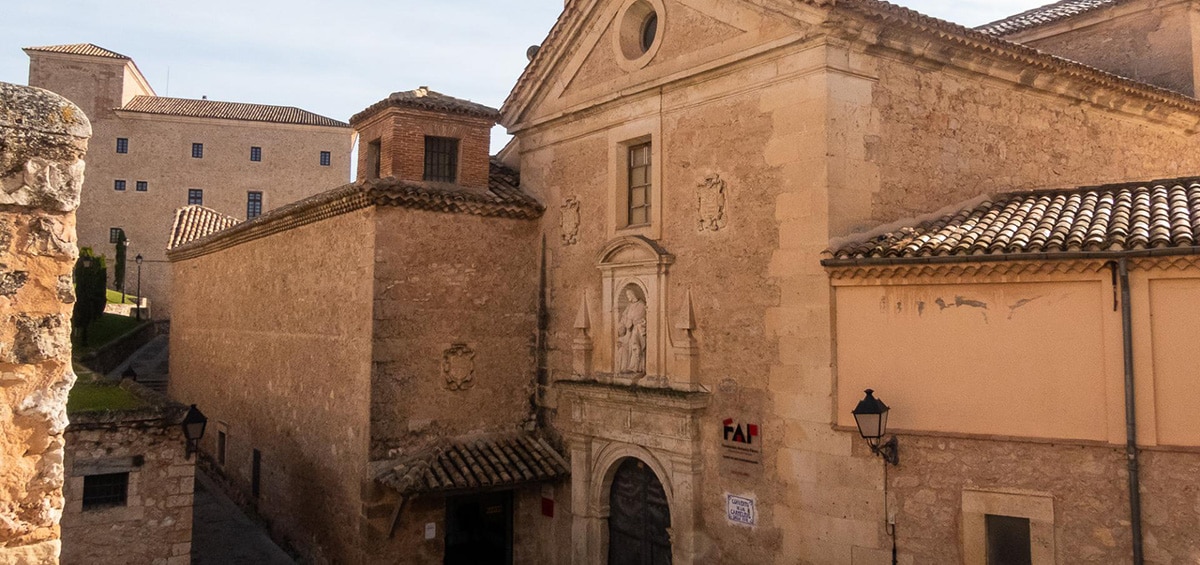
El Convent of the Discalced Carmelites it is also here. The building was bought by the order in 1622 and stands in the highest part of the city, on the canyon of the Huécar river. Today houses the Antonio Pérez Foundation and has a showroom. It has a polygonal plan and was remodeled twice in the 11th century. It opens from Monday to Sunday, from 2 am to 5 pm and from 8 to XNUMX pm.
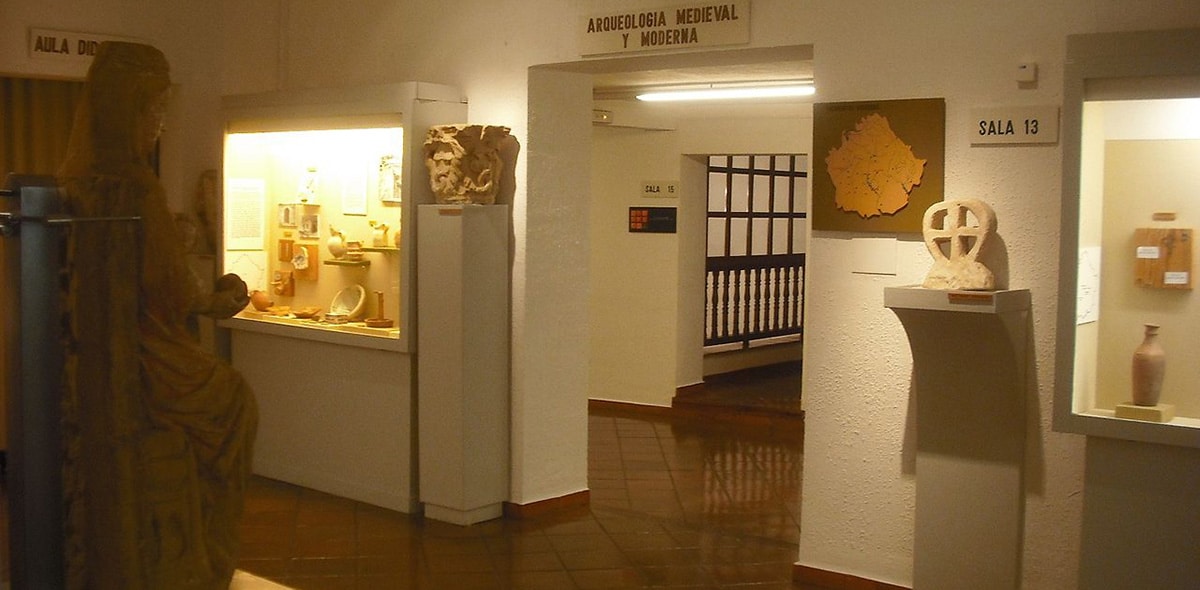
El Cuenca Museum It is on Obispo Valero street and works in the Casa Curato de San Martín. It gives us a journey through the history of the city and there are many objects from different archaeological sites throughout the province. There are columns, ceramic pieces, metal objects and Roman coins, Visigoth objects and Moorish things. Admission is free.
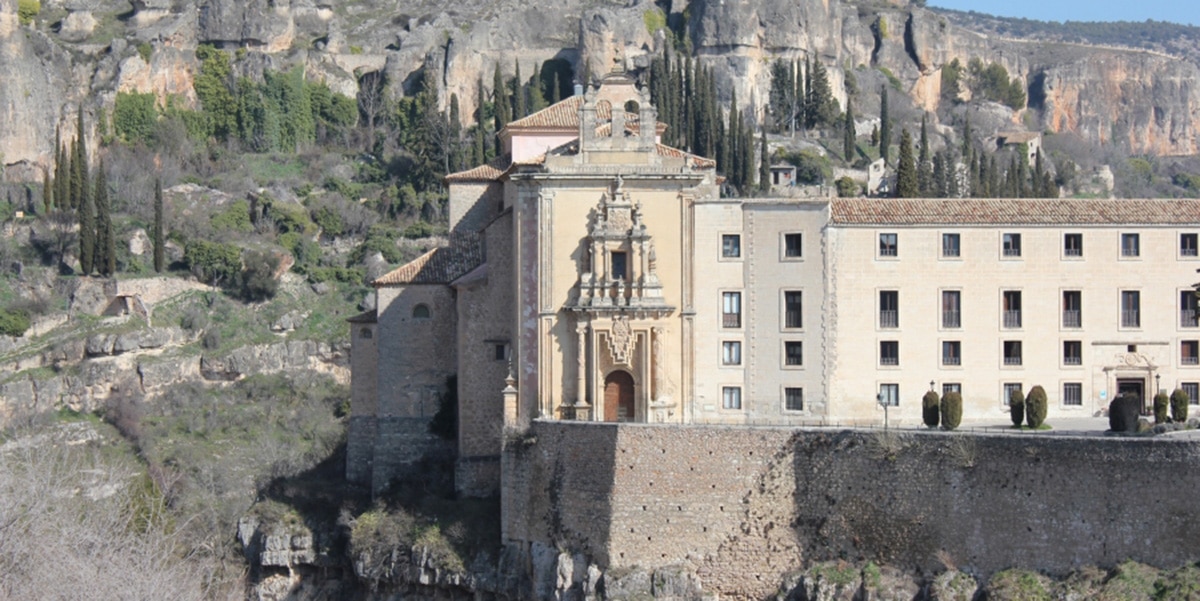
El Convent of San Pablo It is right in front of the famous Hanging Houses and it is a former convent with a gothic church. Today the Parador Hotel works in the building and It offers wonderful views of the entire city. You can go to eat or enjoy a coffee.
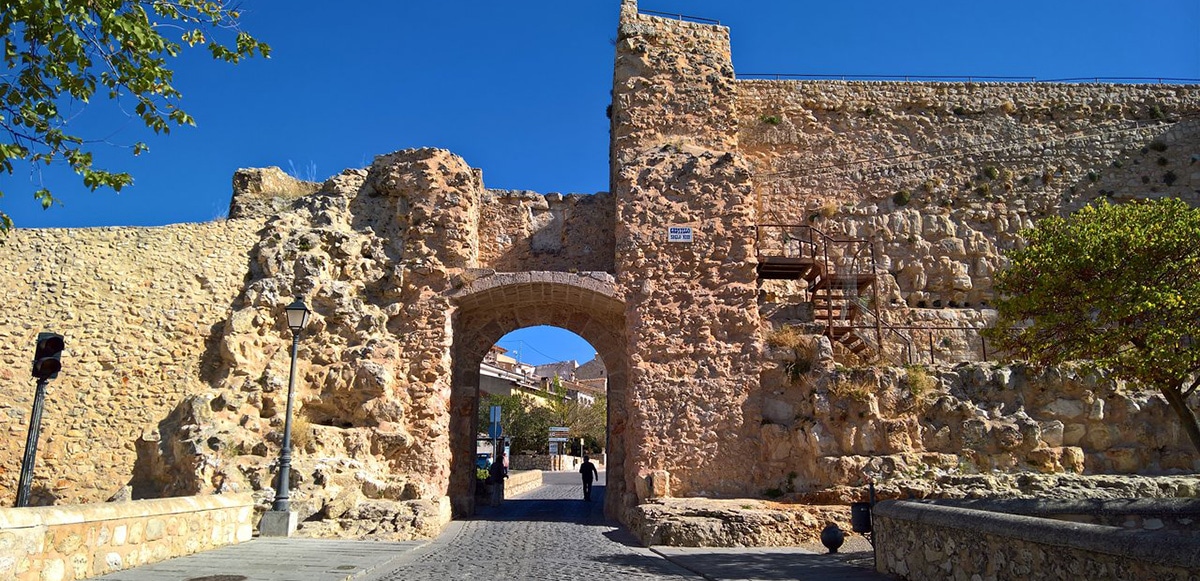
In the list you can not miss the Cuenca castleAlthough there is almost nothing left of the old Arab wall and really very little of what was once a mighty fortress. The last constructions were by the hand of Felipe II, and today we can still see certain parts of the wall, two circular towers and an arch over the entrance door, the Bezudo Arch. The castle is at the highest point in the city, between two gorges. It can only be visited from the outside.
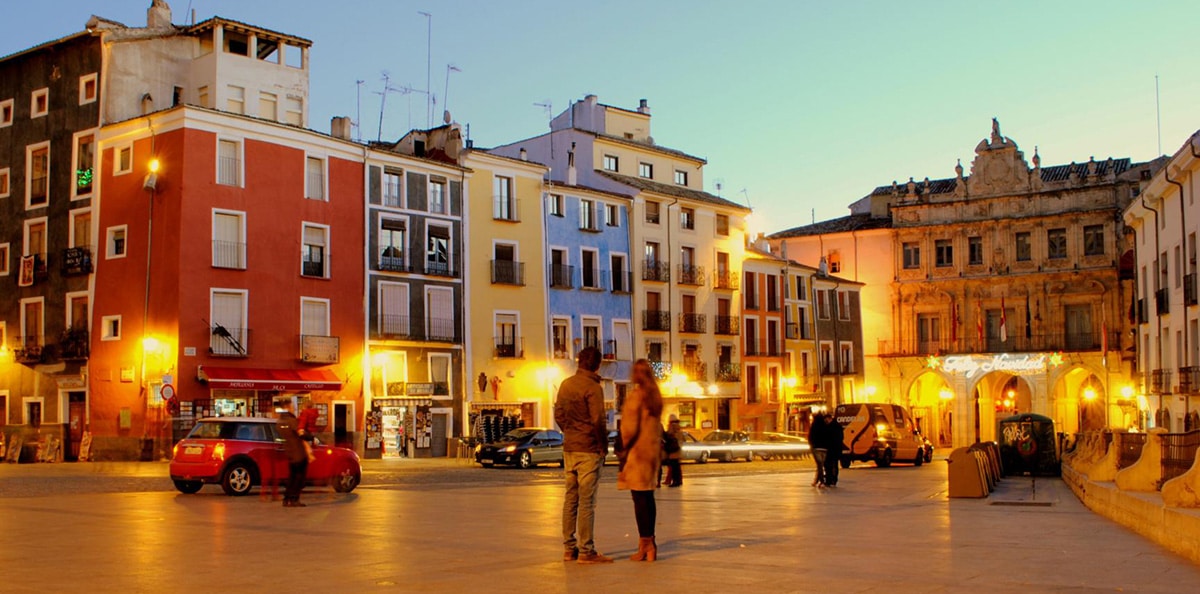
La Plaza Mayor It is the main square of the city and many visitors start their visit to Cuenca here. It has a trapezoidal shape and this is where the cathedral, the town hall and the Las Petras Convent are located. The Mangana Tower It is where the Arab fortress used to stand and it was built in the XNUMXth century and renovated in the XNUMXth century. Have a neo mudejar style and once served as a municipal clock.
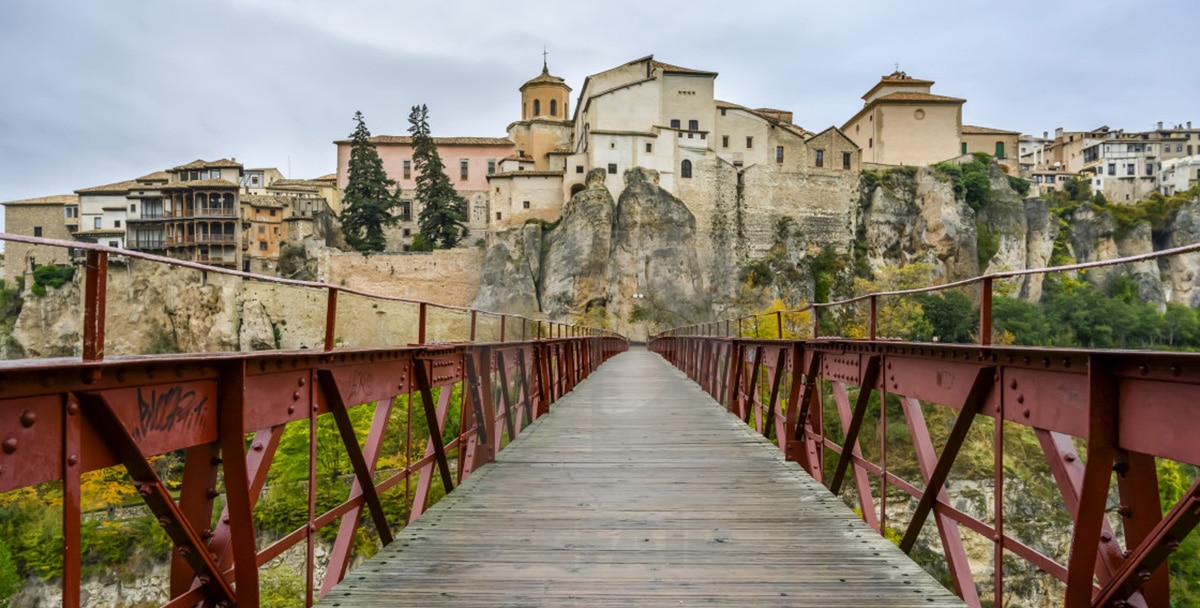
For his part, San Pablo Bridge It is a pedestrian bridge that crosses the Huécar river. The original bridge it was built in the XNUMXth centurybut it collapsed and built a new one with wood and iron at the beginning of the XNUMXth century. It is one of the best panoramic points to contemplate Cuenca and drink the best of the photos of the Hanging Houses.
Speaking of which, they are a local emblem and it is the classic postcard. Houses They were built in the wall that forms the canyon of the Huécar river. Its location, suspended as if they were a vineyard, makes it wonderful. Only three left and one of them today houses the Museum of Spanish Abstract Art with works by Antonio Saura, Fernando Zóbel or Antoni Tàples. This house dates from the XNUMXth century and the museum is open every day except Monday. Another of these houses is the Casa de la Sirena.
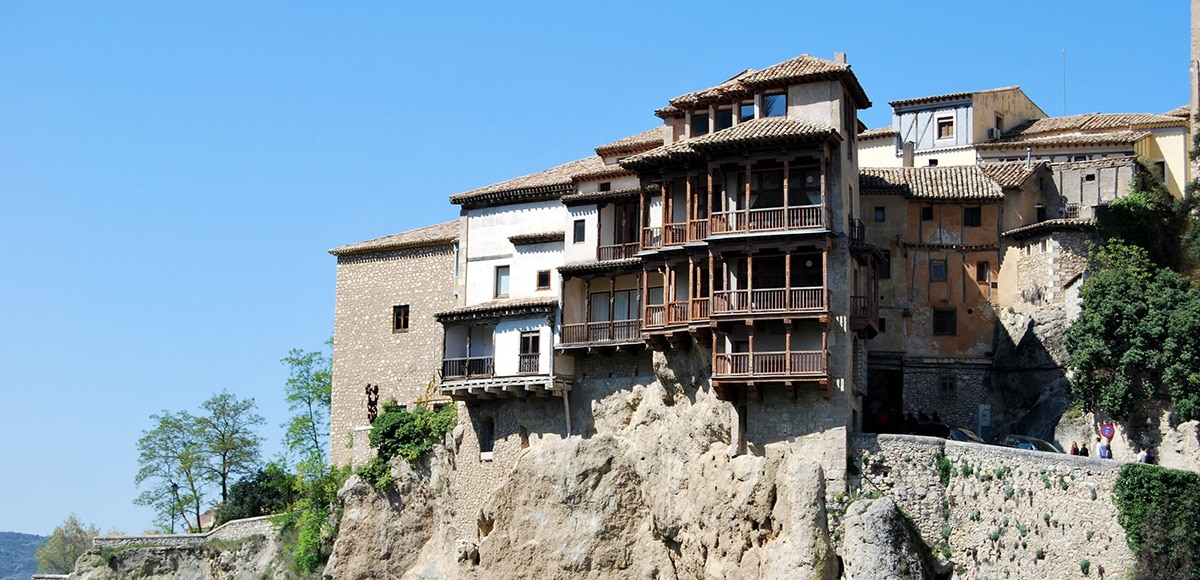
Cuenca also has many religious buildings and among them is also the Church of San Miguel whose construction began in the thirteenth century. Although today the apse remains from that time, the rest is from the XNUMXth and XNUMXth centuries. Hopefully you can go and attend some cultural event. The Church of San Andrés It is from the XNUMXth century, the Church of San Nicolás is Renaissance and the St. Peter's Church it stands on the old mosque. Its dome is huge and beautiful.
In the Plaza Mayor there is also the Convent of San Pedro de las Justinianas, from the XNUMXth century. His church is known as Church of Las Petras and it has an austere facade, but is exquisitely ornamented. Finally, the Town Hall building dates from 1733 and is connected to Alfonso VII street through beautiful portals. So far everything you can see, but obviously if it comes to doing you can walk, take photos, eat local delicacies and have a lot of fun. How about visiting Cuenca and its treasures?
